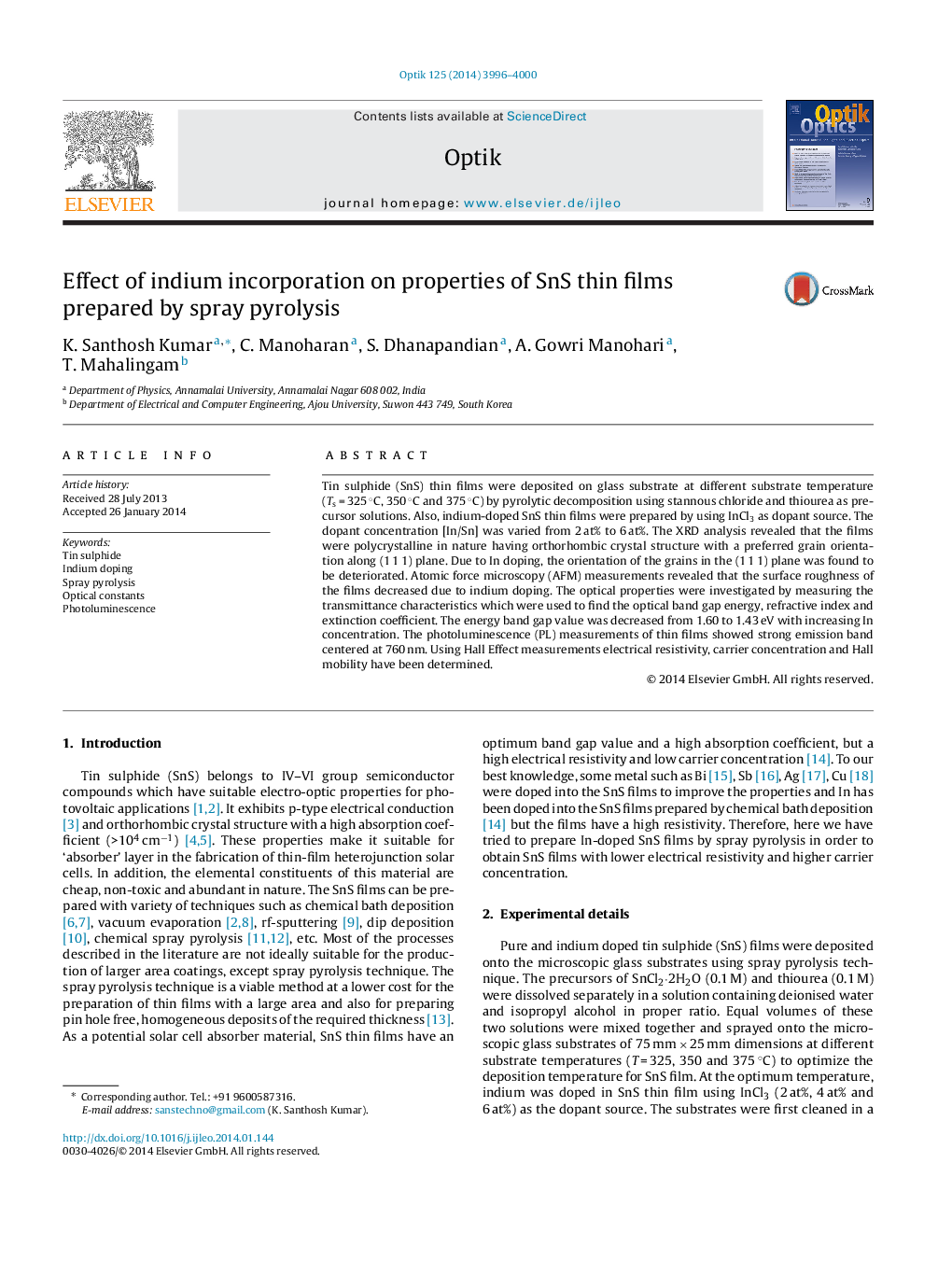| Article ID | Journal | Published Year | Pages | File Type |
|---|---|---|---|---|
| 849062 | Optik - International Journal for Light and Electron Optics | 2014 | 5 Pages |
Tin sulphide (SnS) thin films were deposited on glass substrate at different substrate temperature (Ts = 325 °C, 350 °C and 375 °C) by pyrolytic decomposition using stannous chloride and thiourea as precursor solutions. Also, indium-doped SnS thin films were prepared by using InCl3 as dopant source. The dopant concentration [In/Sn] was varied from 2 at% to 6 at%. The XRD analysis revealed that the films were polycrystalline in nature having orthorhombic crystal structure with a preferred grain orientation along (1 1 1) plane. Due to In doping, the orientation of the grains in the (1 1 1) plane was found to be deteriorated. Atomic force microscopy (AFM) measurements revealed that the surface roughness of the films decreased due to indium doping. The optical properties were investigated by measuring the transmittance characteristics which were used to find the optical band gap energy, refractive index and extinction coefficient. The energy band gap value was decreased from 1.60 to 1.43 eV with increasing In concentration. The photoluminescence (PL) measurements of thin films showed strong emission band centered at 760 nm. Using Hall Effect measurements electrical resistivity, carrier concentration and Hall mobility have been determined.
